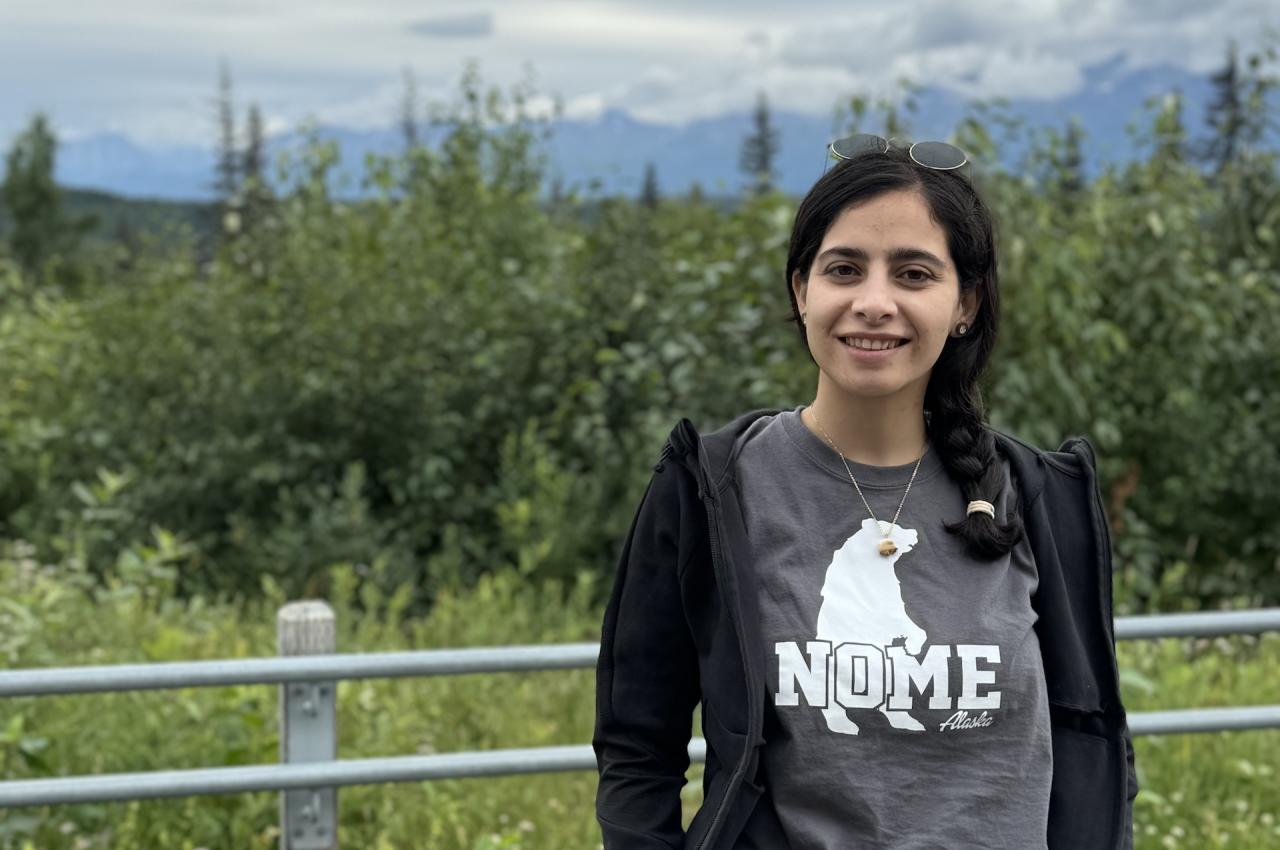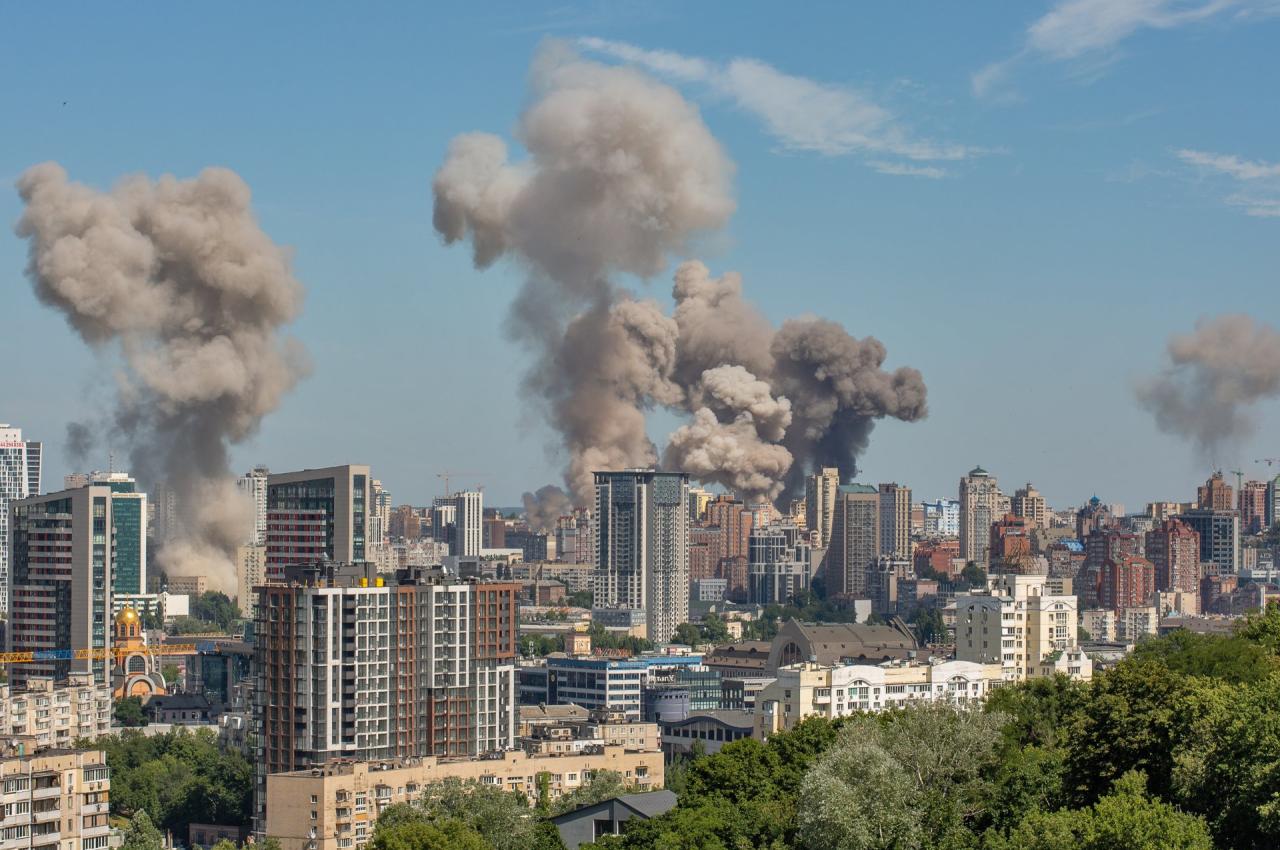In Alaska, an Engineering Student Unlocks the Power of Stories
Haniye Safarpour was finishing up a master’s in environmental technology from the University of Tehran when she realized she’d reached a career crossroads.
“Something was missing,” she recalls. “I loved to think like an engineer, but it wasn’t enough to understand how water and wastewater systems work. I wanted to see their social face, or the human side of engineering.”
That yearning would lead her to follow a path that has taken her well beyond her imagination. A Ph.D. student under Lauryn Spearing, assistant professor in the Department of Civil and Environmental Engineering at the School of Engineering, she supports Spearing’s research group, where she is studying the interplay of services that impact water access in Alaska.
Her work takes a systems-thinking approach, one that involves the holistic analysis of interconnections of several infrastructure systems. The research project includes conducting interviews with a wide range of stakeholders on infrastructure challenges, interdependencies, and their cascading impacts on people's daily lives.
Collectively, those stories can have broad implications. They can be a starting point for recommendations for management strategies but also, from a larger perspective, inform proactive planning for resilient infrastructure management as climate change raises new and unpredictable vulnerabilities.
Why Alaska? Unlike the contiguous United States, Alaska has unique infrastructure challenges, including a lack of piped water and sewer systems in many communities and frozen systems in harsh winters, says Safarpour. More than 32 communities in rural Alaska are unserved, meaning 45% or more of homes have not been served via pipe, septic tank and well, or covered haul system, according to the Alaska Department of Environmental Conservation.
Those challenges are now increasingly exacerbated by climate change. Warming temperatures are softening the permafrost and forcing whole villages to relocate, putting new pressures on communities to reinvent access to basic services like water, heat, schools, and health care.
Given those vulnerabilities, effective operation of infrastructure systems must have an eye on the future; they must be sustainable and continue to work amid disruptions that will inevitably include severe weather, technological failures, and climate change, says Safarpour.
“We are trying to see everything from above so we have a broader overview of how systems are working, and what external factors may impact these systems in people’s lives,” says Safarpour. “We want to find the best solutions by incorporating a range of external factors—what we are learning in this project can help us make connections stronger and systems management better. Our ultimate goal is to improve community wellbeing.”
The work brings into focus the “human side” of engineering by encompassing interviews with a variety of different stakeholders to understand their experiences and challenges not only with water, but with other utilities as well.
“One of the key questions we ask is: What do you think Alaska is the best at?” says Safarpour. “Our research team is interested in learning how different systems are connected and how they can be improved, but we also realize that we may offer valuable information to other cities in the United States who are facing their own challenges.”
Remote Access
The geographical remoteness of the three research partner communities—Nome, Bethel, and Utqiagvik (formerly known as Barrow), requires finding people in places inaccessible by roads. Utqiagvik, the northernmost city in the United States, sits 320 miles north of the Arctic Circle. The only ways in and out are by air, sled dog, or boat.
That makes airports natural places to gather stories. Bethel, for instance, is home to the state's third-busiest airport and the largest port on the Kuskokwim River. It serves as a transportation and administrative hub for more than 50 Alaskan villages in the area. Over one week there, Safarpour conducted more than 50 interviews at a local airport while people waited for their flights.
“While we asked about infrastructure broadly, their responses naturally included concerns about the lack of piped water and sewer systems, as well as issues like open dumpsters near river streams, which risk contaminating their water sources—including the waters they fish from,” she says. “Power outages were another frequent concern, particularly because they can affect water access and impact freezers that store food.”
Several people also talked about collecting ice or using alternative water sources for drinking—practices deeply rooted in their cultural traditions, she says.
“When we asked which systems they felt most satisfied with, after showing them a photo of various infrastructures, their faces lit up,” she says, as they described subsistence practices like berry picking and hunting. “They also proudly spoke about the taste of fish from nearby rivers. These responses really underscored the centrality of culture, tradition, and land in their everyday lives.”
She also gathers perspectives on water from those working closely with the utilities. A ride along with a water delivery truck was one of her most memorable experiences, as drivers shared stories of the job’s tough challenges and physical demands, especially during harsh winters.
“When I asked, 'How do you think we can address these challenges?' they offered ideas—some they've already tried, others they hope to implement,” says Safarpour. “Their insights are invaluable for combining local knowledge with technical perspectives to co-develop better solutions that support both providers and consumers.”
On another research trip to Alaska, she had conversations with elders at a senior center, which offered an opportunity to understand how they used to gather water decades ago and how things have changed.
“Their stories give a sense of continuity and resilience, while also offering an important window into traditional ways of life. Preserving these oral histories is important—not just for our research, but for future generations concerned about losing cultural knowledge.”
Shaping Futures
Over the course of several trips to Alaska and hundreds of interviews, Safarpour has gained a nuanced perspective on infrastructure, as a whole, by virtue of listening, objectively and closely, to different stories.
“By being focused on a social perspective, I’m able to combine my technical knowledge with a comprehensive sustainability assessment of infrastructure,” she says. “Now, when I'm looking at a road, I'm not seeing just a road. I see the underlying pipes and fiber cables, the connections to how water is delivered, and to how people communicate. I see how services are connected to each other and how important it is that they work together. Everything we’re learning confirms that water systems cannot operate in isolation.”
It’s an experience, she adds, that would not be possible without the wholehearted support of community members who have generously shared their experiences — an openness, she says, that is its own form of encouragement.
“What I’ve learned is that Alaskans are resilient people who are open to new ideas,” she says. “Some of them asked us outright: If you talk with different communities in the United States, share with us what they do,” she says.
That broader appreciation, she adds, holds the promise of shaping a resilient future for Alaska, as, at the same time, it shapes her own as a civil engineer.
“This fieldwork has been a very rewarding experience,” she says. “It’s affirmed for me that being a civil engineer means looking at how infrastructure is working together for the people who are living in that community,” she says. “When I started this journey, I wanted to understand the human side of engineering. I never imagined it would take me to Alaska, but that’s where I found it—in the stories, challenges, and resilience of the people who live there.”
Latest Tufts Now
- The Unending War in UkraineDespite more than three years of brutal conflict, Ukrainians are still mostly unified in fighting off Russian invaders, says political scientist
- Seed Oils Aren’t the Problem—How We Consume Them IsNutrition experts separate fact from fiction on plant-based oils, also known as seed oils, what products to choose, and why you might pick oil over butter or tallow
- What Mamdani’s Victory Says About Engaging Gen Z VotersHis campaign drew a surge of new voters, including young people. Will the youth vote help shape the 2026 midterms, too?
- TB Bacteria Play Possum to Evade VaccinesGenetic study reveals how Mycobacterium tuberculosis survives in vaccinated or previously infected hosts
- The Next Leader of America’s Dentists Sees Opportunity in This MomentThe American Dental Association supports many ways to improve oral health. Fluoride is just one of them
- I Learned the Hard Way About Helping My Father-in-Law with DementiaThis is my story and the lessons I learned—I want to help others who are facing loved ones with memory loss disorders













